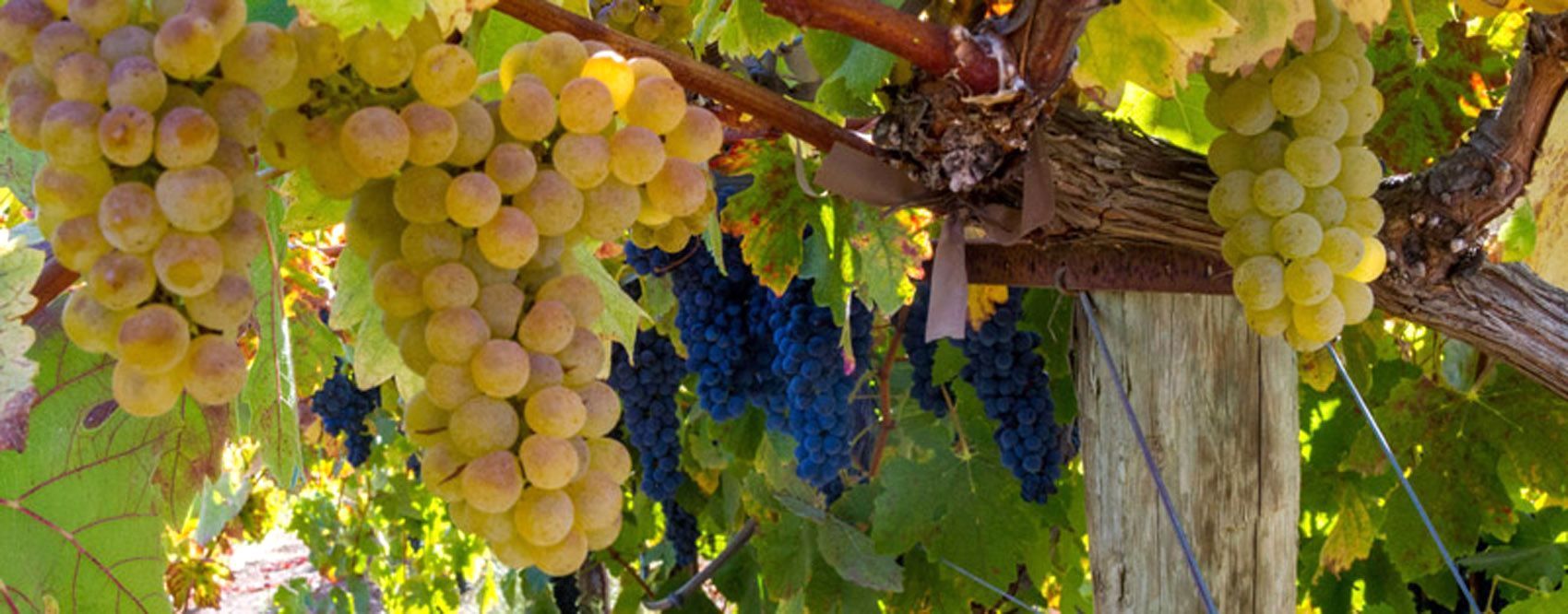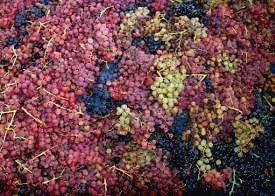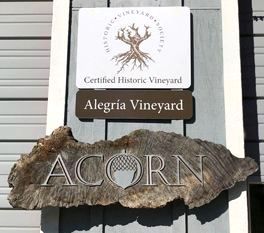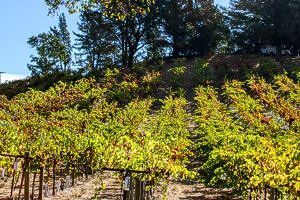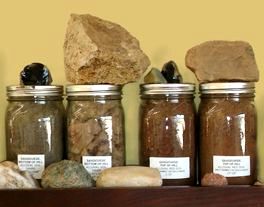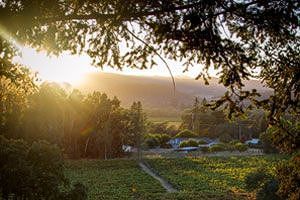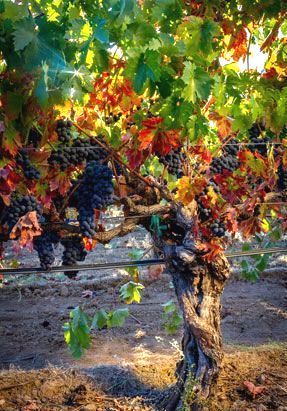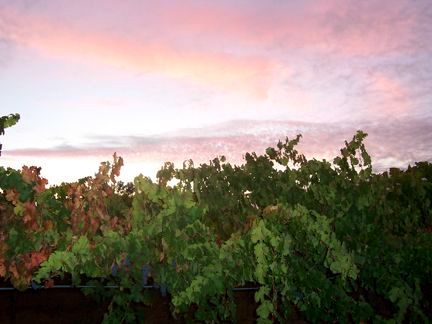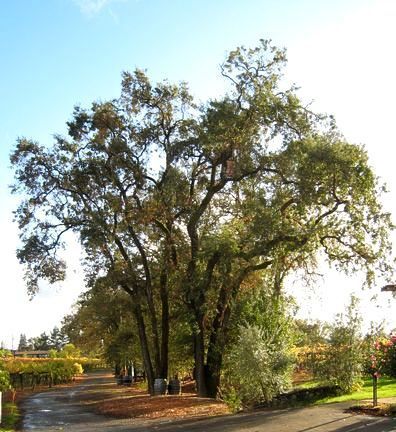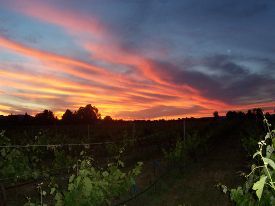Farming & Winemaking
Field-Blend Tradition
Every ACORN wine is a field blend.
That means multiple grape varieties are grown together, harvested together, crushed, and co-fermented — the blending is done in the vineyard, not at the winery. The melding of flavors from the different grapes starts at the very beginning of the winemaking process — on the day the grapes are picked.
The intriguing mix of varieties inter-planted on the Alegría vineyard in 1890, and the complex wine that mix produces, inspired Bill and Betsty to continue the field blend tradition when they planted more vineyard blocks. They planted complementary varieties along with the major varieties, which creates especially complete and complex, delicious, food-friendly wines.
Other vineyards that are now being used for ACORN wines also use this field-blend tradition -- some from very old vineyards, such as the Battaglini vineyard, planted in 1885, and some from much newer vineyards, planted by current-day grape growers who are bucking the trend of planting the Russian River Valley to Chardonnay and Pinot Noir by planting a large number of varietals.
FAMILY Farming
All ACORN wines are made from family-farmed grapes.
Farmers who live on their vineyard and farm it themselves treat the vineyard as an ecological system with a balance among the grapevines and all the creatures that live and grow and work there, including themselves and their workers.
All vineyards that are used for ACORN wines are farmed sustainably. We avoid the use of insecticides and limit other inputs through a labor-intensive process that requires individual attention to each vine. We remove leaves and manipulate the vine canopy to expose the grapes to sunlight. This maximizes color and flavor development and reduces the risk of pests. During the growing season each vine is visited a dozen times (for pruning, tying, training, suckering, leaf removal, crop thinning, trimming, etc.) to ensure the crop is in balance and the harvest will produce flavorful, complex wines.
We use products and methods that organic growers use, although none of the vineyards are officially certified organic. We maintain a cover crop of grass, wildflowers, and weeds between the grapevines to prevent erosion and provide habitat for beneficial insects. We monitor to be sure "good bugs" are there to control the "bad bugs". The vineyards may look more scruffy than some, but that's because there is more life there.
CONNECT WITH ACORN

CONNECT WITH
BILL & BETSY
P.O. Box 2061
Healdsburg, CA 95448
(707) 433-6440
nachbaur@alegriavineyards.com
